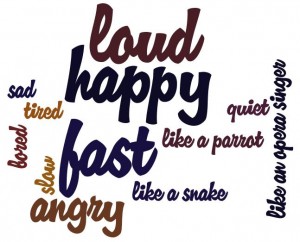Here’s another great activity from Catherine Morley’s TESOL-SPAIN workshop…
Type up the lyrics to part of a song and stick them on the wall outside the classroom. Put students into pairs and then explain that student A has to go outside, read and remember part of the text and then come back in and dictate it to their partner who writes it down. This works well if you put a line halfway through the song so that the students swap roles. Remind students that they can’t shout and (depending on space) can’t run. When students have finished, check the lyrics for spelling mistakes and then play the song for them to follow.
I did this activity with a Primary group the other day, using one of the songs from their coursebook – as you know, I’m always looking for ways to exploit those songs! They really enjoyed the activity – it was competitive but very inclusive: the stronger students perhaps did it a little quicker, though they still made some mistakes, and for weaker students it was an opportunity to use the skills they have, but which are sometimes afraid to show when doing group or whole class activities. And even though there was a competitive nature to the activity, there was no “reward” for doing the activity faster.
 Here’s a great site for students and also for teachers who might be learning the foreign language of the country they work in. Lyrics Training is an innovative site where you listen to popular songs and complete the lyrics. There are three levels: Easy and Medium (10% and 25% gapfill respectively) and Hard, in which you must listen and complete the entire song. There are a variety of songs in English, but you could also brush up on Spanish, French or German to name but a few.
Here’s a great site for students and also for teachers who might be learning the foreign language of the country they work in. Lyrics Training is an innovative site where you listen to popular songs and complete the lyrics. There are three levels: Easy and Medium (10% and 25% gapfill respectively) and Hard, in which you must listen and complete the entire song. There are a variety of songs in English, but you could also brush up on Spanish, French or German to name but a few.